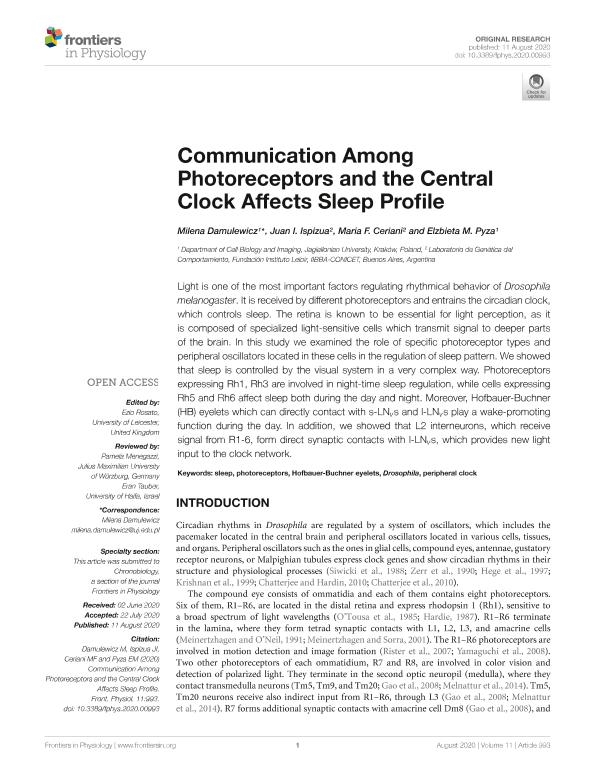Artículo
Communication Among Photoreceptors and the Central Clock Affects Sleep Profile
Fecha de publicación:
08/2020
Editorial:
Frontiers Media S.A.
Revista:
Frontiers in Physiology
ISSN:
1664-042X
Idioma:
Inglés
Tipo de recurso:
Artículo publicado
Clasificación temática:
Resumen
Light is one of the most important factors regulating rhythmical behavior of Drosophila melanogaster. It is received by different photoreceptors and entrains the circadian clock, which controls sleep. The retina is known to be essential for light perception, as it is composed of specialized light-sensitive cells which transmit signal to deeper parts of the brain. In this study we examined the role of specific photoreceptor types and peripheral oscillators located in these cells in the regulation of sleep pattern. We showed that sleep is controlled by the visual system in a very complex way. Photoreceptors expressing Rh1, Rh3 are involved in night-time sleep regulation, while cells expressing Rh5 and Rh6 affect sleep both during the day and night. Moreover, Hofbauer-Buchner (HB) eyelets which can directly contact with s-LNvs and l-LNvs play a wake-promoting function during the day. In addition, we showed that L2 interneurons, which receive signal from R1-6, form direct synaptic contacts with l-LNvs, which provides new light input to the clock network.
Palabras clave:
DROSOPHILA
,
HOFBAUER-BUCHNER EYELETS
,
PERIPHERAL CLOCK
,
PHOTORECEPTORS
,
SLEEP
Archivos asociados
Licencia
Identificadores
Colecciones
Articulos(IIBBA)
Articulos de INST.DE INVEST.BIOQUIMICAS DE BS.AS(I)
Articulos de INST.DE INVEST.BIOQUIMICAS DE BS.AS(I)
Citación
Damulewicz, Milena; Ispizua, Juan Ignacio; Ceriani, Maria Fernanda; Pyza, Elzbieta M.; Communication Among Photoreceptors and the Central Clock Affects Sleep Profile; Frontiers Media S.A.; Frontiers in Physiology; 11; 8-2020; 1-17
Compartir
Altmétricas




